The Benefits of Ileocecal Valve Massage
Often times, solutions can be so simple that they get overlooked. Ileocecal valve massage is one of those solutions. Ileocecal valve massage has been found to be very effective for the relief of a wide range of gastrointestinal problems. Research has suggested that malfunction of this valve is a large contributor to gas, bloating, abdominal cramping, constipation and more (1).
Massaging the valve has been reported to help with issues such as colds, nausea, small intestinal bacterial overgrowth (SIBO), constipation, diarrhea and more due to the large impact that gastrointestinal health has on the entire body.
Another great perk about the ileocecal valve massage is that it is absolutely free. Free, natural, and evidence based healing solutions are always worth a try!

What is the Ileocecal Valve?
The ileocecal valve connects the large intestine to the small intestine. The valve creates a barrier that allows each environment to support different temperatures, pH levels, microflora and digestive processes.
Essentially, this valve functions as a barrier between the large and small intestine. It prevents the backflow of harmful toxins and microbial overgrowth into the small intestine. It also prevents food from entering the large intestine before it is effectively digested (5).
Malfunction of the Ileocecal Valve
Problems occur when this valve is stuck open or closed. Once food has been digested and is ready for passage into the large intestine, a closed ileocecal valve will result in constipation. When constipation occurs due to this valve being stuck closed, fecal matter and toxins are not able to get through the entrance into the large intestine.
Instead, these waste products are left in the small intestine and the function of the small intestine is to absorb. Therefore, these toxic waste products continue to be absorbed into the body, which can cause many health issues (5).
When the valve is stuck open, food can exit too quickly in the form of diarrhea and malabsorption of vital nutrients can result. In addition, bacteria from the large intestine can also migrate up into the small intestine causing bacterial overgrowth and the resulting health deterioration that goes along with that.
The Role of the Ileocecal Valve in SIBO
As mentioned above, research has supported that when the ileocecal valve is stuck open, this allows bacteria to proliferate up into the small intestine that would not normally have access to this area.
One study that was designed to find out if a malfunctioning ileocecal valve is related to small intestinal bacterial overgrowth (SIBO), evaluated ileocecal valve pressures and lactulose breath readings. They also noticed correlations with patient symptoms that they were not expecting.
They used a colonoscopy procedure to evaluate the pressures and found that patients with a lower pressure and open valve, had positive lactulose breath readings and symptoms of fullness during meals, gas, and bloating. Patients with a higher pressure had negative lactulose breath readings and denied having any gastrointestinal symptoms.
The results of these studies show us that an open ileocecal valve is highly related to small intestinal bacterial overgrowth (3). Another very similar study was conducted and the data replicated the results of the study mentioned above. The researchers concluded that malfunction of the ileocecal valve is a “prominent player in intestinal disorders” and should be considered in patients struggling with gastrointestinal complaints (1).
Small Intestinal Bacterial Overgrowth (SIBO)
SIBO occurs when there is overgrowth of bacteria from the large intestine up into the small intestine. The small intestine is less populated with gut microflora so when overgrowth occurs this can cause multiple symptoms such as:
- Gas
- Bloating
- Diarrhea &/or Constipation (less common than diarrhea)
- Abdominal pain or cramping
- Skin disorder such as eczema and rosacea
- Diagnosis of irritable bowel syndrome or inflammatory bowel disease
- Food intolerances such as gluten, casein, lactose, fructose and more
- Chronic illnesses such as fibromyalgia, chronic fatigue syndrome, autoimmune diseases, diabetes and neuromuscular disorders.
- B12 deficiency as well as other vitamins and minerals (iron and magnesium are common)
- Fat malabsorption (2).
What Can Cause Ileocecal Malfunction?
- Dehydration
- Any type of stress
- Eating too frequently
- Eating too quickly
- Food sensitivities
- Under-chewing your food
- Caffeine
- Carbonated drinks
- Alcohol
- Chocolate
- Hot spicy food (4)
- Appendix removal (5).
- Pregnancy
How to Locate and Massage the Valve?
In order to massage the valve, you can follow these steps. Keep in mind that placement may vary from person to person.
- Place your right thumb on your hip bone and your left thumb on your navel.
- The valve is located about halfway between the hip bone and belly button so imagine a line connecting these two points and find the middle.
- Take all of your fingers and place them about 3 inches below that middle point. You should be close to the ileocecal valve.
- Press in slowly but deeply and firmly. Search for the little tender hardened area and this is your valve. Some people find it easier while laying down.
- After you find it, begin to massage it in a circular motion with medium pressure for 10-15 seconds.
- Then come about 3-4 inches to the left of the IC valve and make a fist and gently push from left to right to move contents through the small intestine and into the large intestine.
- After the massage, form your hand into a fist and stimulate the reflex are located in the right front upper arm (close to your armpit) for 10 seconds. View the chart below for location visuals (4).
How Often To Do the Valve Massage
This can be done 3 times a day before meals as well as first thing in the morning and last thing before bed.
Also, keep in mind that the entire digestive tract is a muscular tube and is constantly contracting (peristalsis) and relaxing. Sometimes these muscles may show signs of cramping or have weak areas. This may present as gas, burping, or weird throat noises such as gurgling.
These signs can indicate that your valve needs support. The tenderness associated with the location of the valve may go away after a week or two of implementing this technique (4).
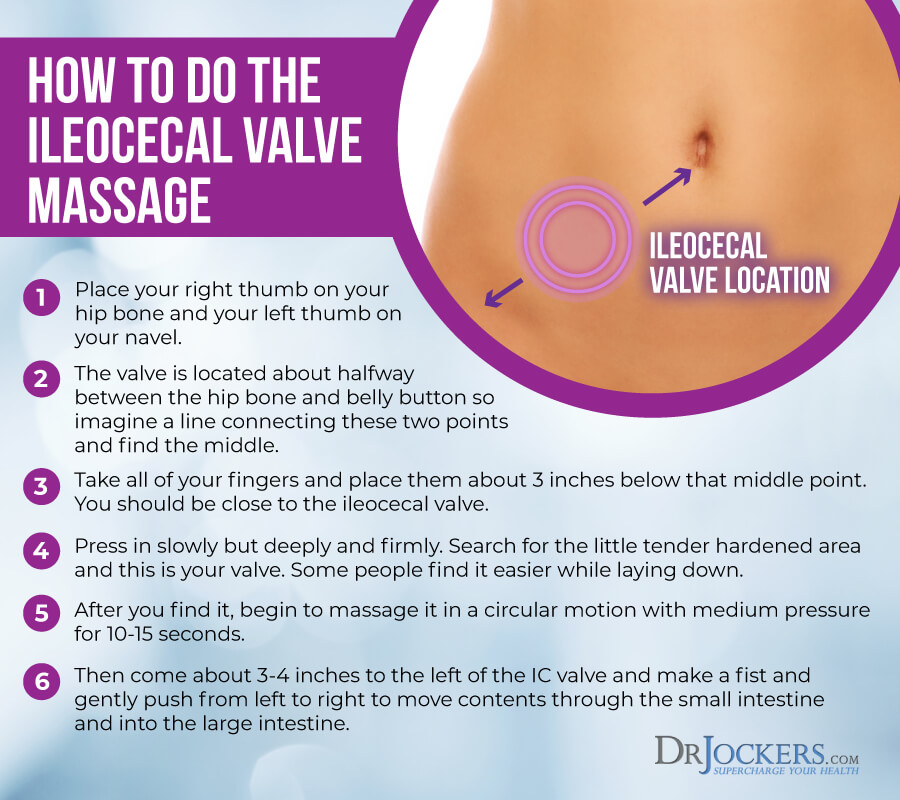
How to Close an Opened Valve?
An open valve will likely result in signs of small intestinal bacterial overgrowth or diarrhea. You can try closing the valve yourself by finding the valve and pushing in with your fingers. While you are pushing, pull up and toward the left shoulder for 3 minutes.
Placing an ice pack over the valve for 15-20 minutes may also help close the valve (5).
In addition, we suggest using activated charcoal to aid in stopping diarrhea. This supplement has the capability of binding materials and absorbing them like a sponge. It can absorb over 100 times its own weight in toxins and bind them so that they are excreted in stool. This is also our go to product for absorbing die off toxins of harmful pathogens in the gastrointestinal tract.
This Is The Protocol We Use For Diarrhea:
GI Clear: 1-2 caps – 3 times daily (about 15 mins before meals or away from food)
Activated Charcoal: 2-8 caps 3-5x daily until diarrhea stops
L-Glutamine: Take 1-2 scoops in water, broth or in a shake – 3x daily until diarrhea stops
You can also consider adding in the Gut Healing Protein and taking 2 scoops in a shake as it has a lot of fiber and gut healing compounds to help stop the diarrhea and support the microbiome.
Do this until the diarrhea stops and then drop all dosages in half and continue for two weeks. This approach absorbs toxins, increases secretory IgA, aids in rebuilding the gut lining, kills off pathogens, and absorbs die off toxins.
How to Open a Closed Valve?
When constipation is experienced, try massaging the valve for several minutes as well as the reflex area in the right upper arm (5).
We have found the most effective product for constipation to be magnesium, as most diets are either deficient or the body is not absorbing this nutrient well. We use 200-800mg of magnesium in the form of magtein, magnesium L-threonate, and magnesium lysinate glycinate chelate.
These forms of magnesium have been proven to be the most absorbable. Most supplements containing magnesium are not absorbed efficiently by the body and can require excessive amounts to get the correct amount. Brain Calm Magnesium also contains magtein , which is the only form of magnesium shown to cross the blood brain barrier and improve brain function.
Other methods for relieving constipation include 8 ounces of unsweetened aloe vera juice, green juices with fresh ginger and lemon, increased amounts of fibrous vegetables, and ginger herbal teas. Ginger promotes bile secretion and detoxification from the liver as well as peristalsis throughout the gastrointestinal tract.
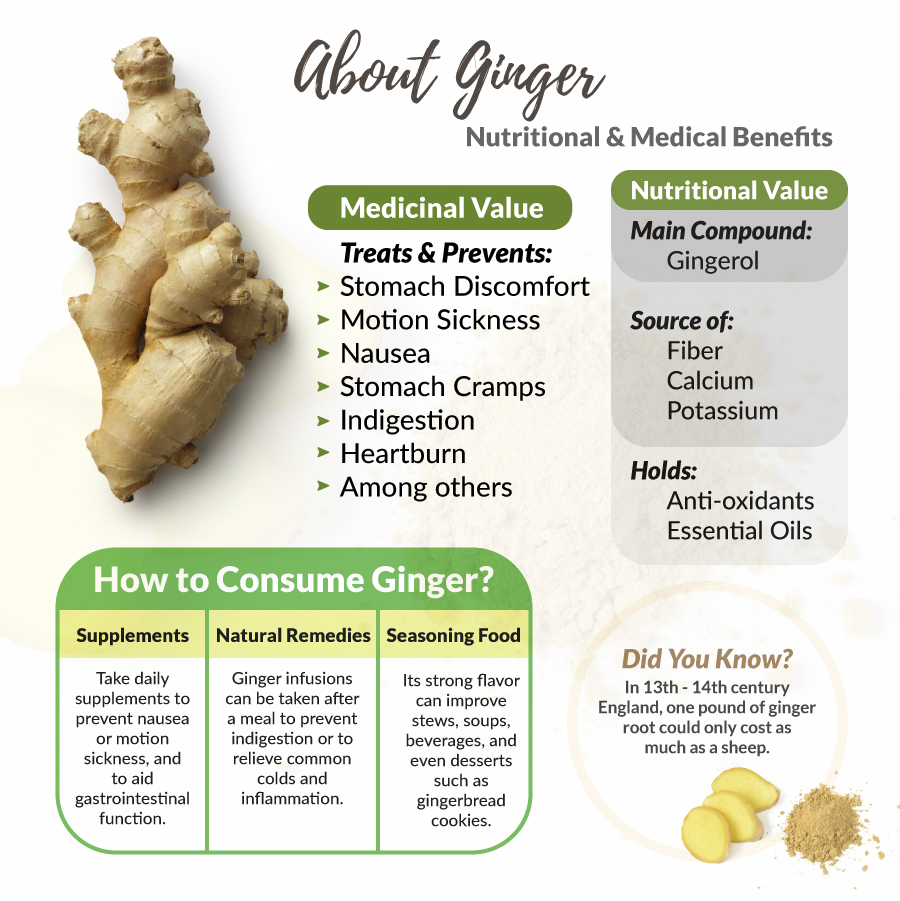
Steps for Maintaining a Healthy Ileocecal Valve
- Eliminate the toxic foods from the intestinal tract with activated charcoal and you can use an oxygen based colon cleanser such as Oxy Powder.
- Remove spicy foods (for at least a week) and remove alcohol, cocoa, chocolate and caffeine from the diet if you struggle with this problem.
- This last step is very important. To relieve symptoms quickly, rub the reflex points below for 10-20 seconds each. It is not beneficial to this for longer or shorter of a time period. The reflex points include the right upper front arm by armpit, outer and inner thighs of both legs on the front and back, the right side of the neck next to the spine and touching underneath the occipital bone of the skull, and the back of the right calf close to the knee.
Conclusion
The next time that you or someone you know, is struggling with symptoms of gastrointestinal distress or even flu like symptoms, try ileocecal valve massage and rubbing the associated reflex points suggested in this article (5). You may be pleasantly surprised from relief.
A stool test to evaluate the health of your gut and to identify the possible cause of your digestive issues can aid your health coach in developing a customized protocol for you. You can also check out our digestive health restoration program to learn more on how you can rebuild your gut health.


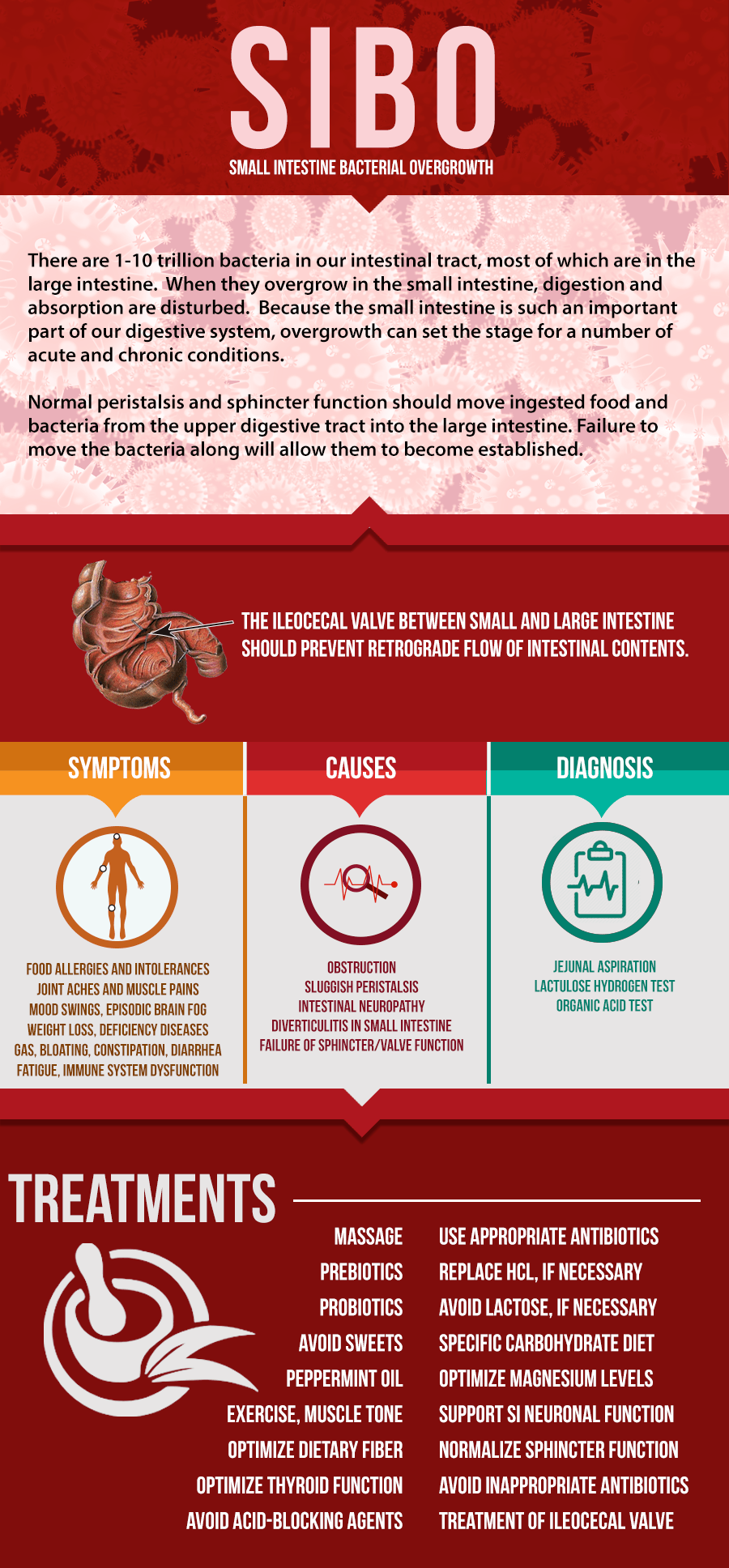
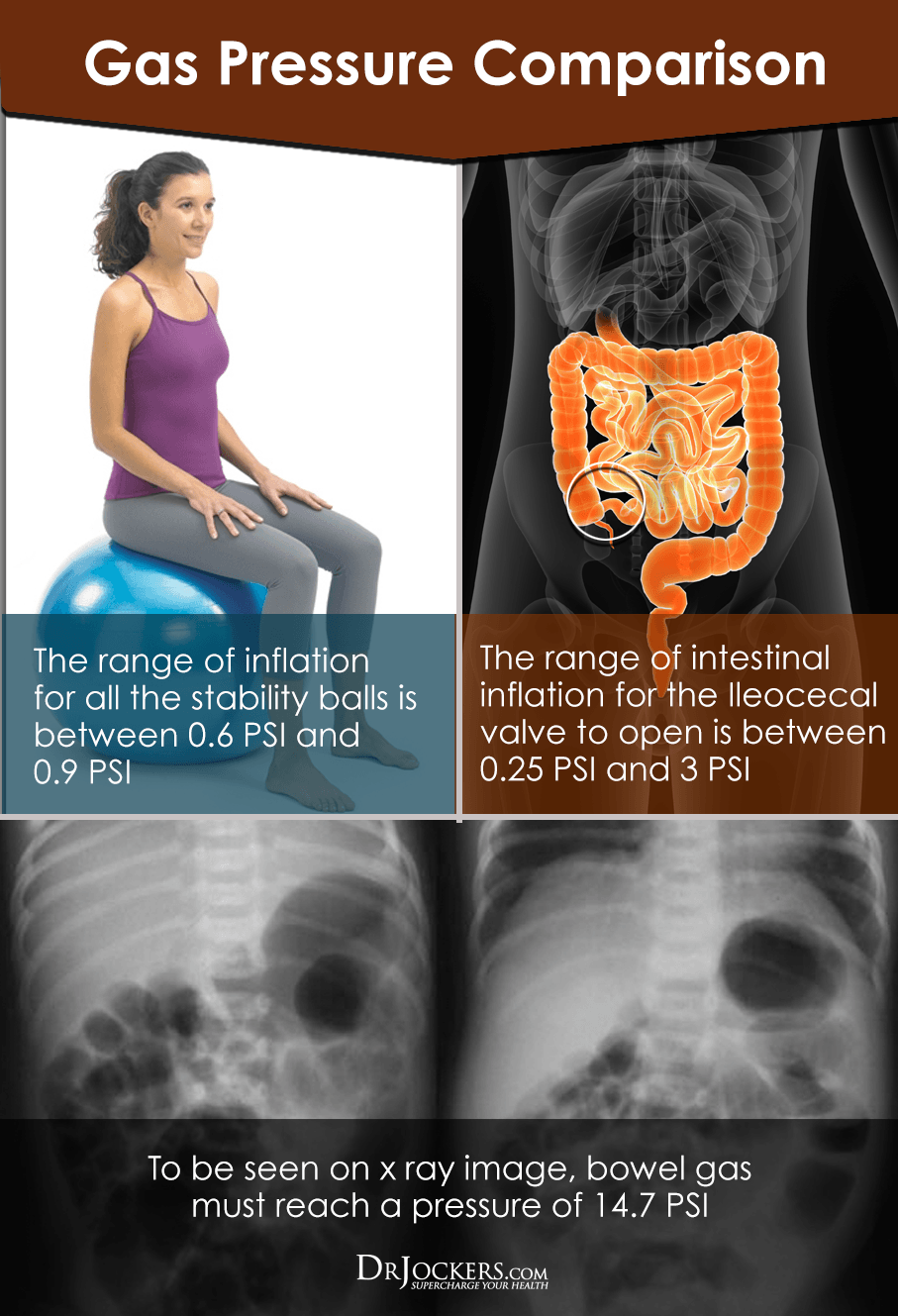
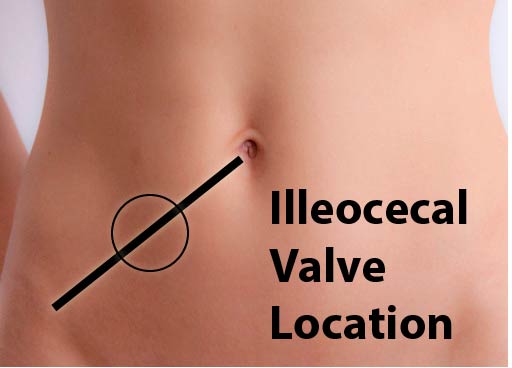
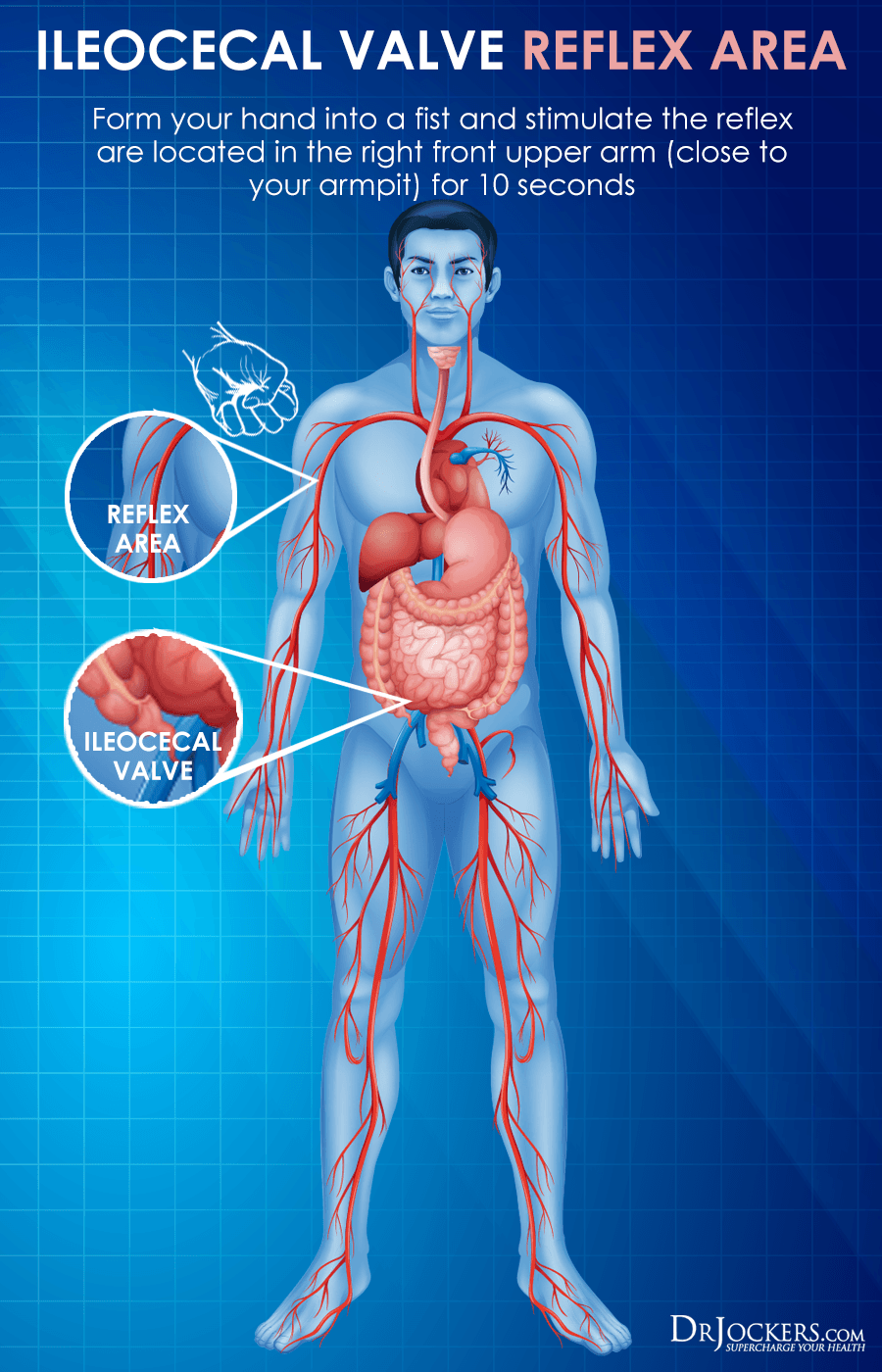
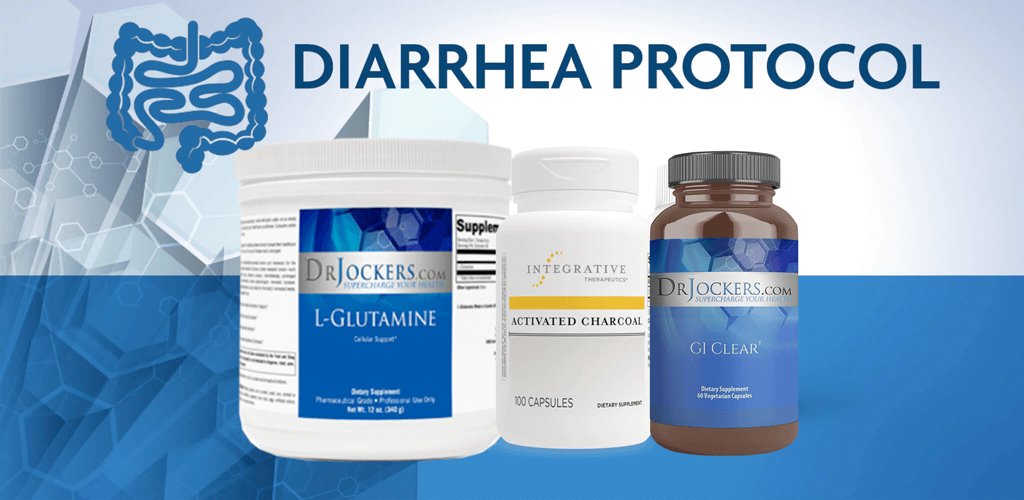
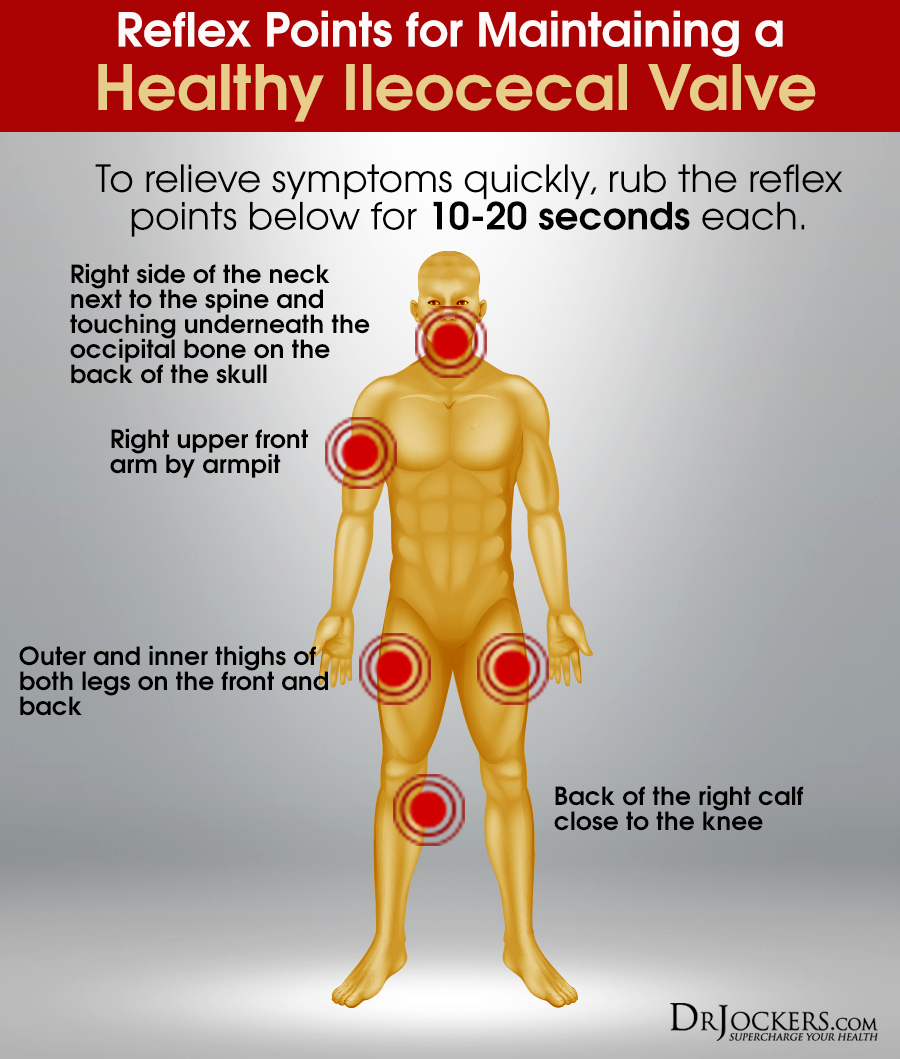



Magnesium keeps me up at night, even relatively low doses. I have tried Doctors Best Magensium, which is a chelated form, and I have tried Calm Magnesium. Both kept me up, but the chelated magnesium made my constipation worse. Why does magnesium have the opposite effect on me?
Hey Manju, sorry to hear about this! You could try doing one dose in the morning and one in the afternoon. Make sure you are drinking plenty of water, eating a lot of healthy fats, and fibers veggies.
Sorry to read about your MG issues.MG is SO important for so many body chemical reactions.Best MG I’ve found is ‘Mag Orotate’ from Biotics Research (Who used to be a ‘Sold-to-doctors-only’company,but the internet did away with that–try Pureformulas.com,p.s.ALL
the Biotics stuff is first-rate..Or try a mg bath (Or Epson salts),but ALOT–like 12 pounds/bath.Your body can REALLY get enough..a bath a week for 1mo.,then 1/mo.
Teacher said 25 lb if got cancer.
I have just discovered (yesterday) your site- i went searching because i also just discovered that I have this condition but have gotten no guidance from my doctor, I am so grateful to find that there is something i can do about my unexplained gas, bloating and low iron and am hoping to achieve positive results following your massage video and life style changes
Great Judi!
Thanks Dr J. I have suffered with crohn’s all my life, initially I think manifesting as constipation and the area of inflammation found in my small intestine at age 18 was precisely in that area of the last portion of the small intestine by the ileocecal valve. Your website is very helpful and I will also be recommending that my 20-year-old also does the massage as he has similar gut issues to me. I have also suffered from CFS since age 31 (now 56) so it will be interesting to see how I progress. Within a few days of starting the massage 2-3 times a day I was getting a more robust-feeling bowel and better formed stools, also less reaction to foods (I have had to go on the Specific Carbohydrate Diet/Paelo to manage gut symptoms). It makes sense to me that the bowel, being muscle, could do with a hand (literally!) to help tone it up, much as the rest of the body, which most of us recognise need exercise and toning. What a simple solution and one which gives us a sense of control, instead of feeling out of countrol and dependent on medication. Thank you for making this technique so accessible and well explained. Susan White, Wiltshire, UK
Thanks for reading Susan! Blessings!
i have a tender spot and when i rub it deep it sounds like fluid is moving. whats this?
Dr. Jockers , just got a severe case of diarrhea that I knew was a result of eating something that irritates my GI track. I remembered that my Chiropractor Used to fix this for me. I read how to do the procedure. It was simple and exactly as she did it.
Thank you so much for sharing this wisdom.
Nathaniel
I think I have this problem BIG TIME!!! When I did the massage I immediately began to perspire, feel very hot, and the kidney and below the ribs wanted to ache (gas???)
Thank you for this info!! I’m passing it on!!
sir i have operated 2 years ago and my sergon removed this valve into my body….now i have a problem of diareah and i cannot control my stool….i discussed my surgon and its give me a amodium tablet but its not work….i go washroom 5 t0 6 times…..and i have not pass thick or normal stool…kingly give me advise…..thank you Azeem
Sorry to hear about this Azeem. Try consuming a lot more of these foods: https://drjockers.com/top-33-prebiotic-foods/
Wow! SOOO happy I found this! Have had issues with my illiocecal valve for over 10 years. At first I believed it was my appendix. Went to several gastroenterologists, that basically said it was all in my head. Doing more research on anatomy and knowing my symptoms, discovered myself that it was my illiocecal valve. I would rather try your approach than anything evasive. I preformed the massage a few minutes ago and I am already feeling relief.
Thank You Very Much
God Bless
So happy to hear this Anne! Blessings!
Great and thorough article! Must have taken a lot of work. Thank you. Sharing it with some of my patients.
Best,
Ryan Simmons, DPT, Pelvic Health Specialist
Thanks for reading Dr!
Hi Dr. Jockers!! I have been doing the illiocecal valve massage for 4 days and am usually constipated but now having loose stools and cramping more so on right side.. Is that normal? Is it some type of detox reaction?
God bless and thank you!💕
Potentially Kimberly! Hopefully it balances out soon!
I found this article a few days ago after suspecting my illeocecal valve was a problem contributing to over two years of significant severe bloating which is likely sibo. I was wanting to try the least invasive thing possible. I have been doing this ( and also Donna Eden has a similar illeocecal valve massage technique) three days now and have noticed a reduction in bloating. I am wondering if this alone can cure sibo, if my main symptom is severe bloating? I would love to avoid a whole treatment of antimicrobials is I can– have you found this massage alone is enough to heal sibo bloat? also, is it ok to massage it in any direction or is there a direction to avoid?
That is great Kate! I don’t know if this would be enough to get rid of SIBO completely. Also, the instructions in the article contain the critical steps for performing this!
For 3 years I’ve had increasing burning pain in this area, and I’m pretty sure this is the cause. I also have lots of gas, bloating and constipation. Question: Why weren’t 5 expert GI specialists able to diagnose this with CT, MRI, ultrasound, and a colonoscopy which they said looked at the ileum and cecum? Massage has helped a little bit recently.
I am not sure why they wouldn’t be able to pick this up Claudia. Glad to hear it is helping! There could be other issues to investigate such as SIBO, food sensitivities, and leaky gut.
I believe I have been suffering from this for most of my life. I take very good care of myself but recently I had a usual monthly colonic and I believe my valve is open. I’m a tiny girl but my gut is so distended and after the session I was in terrible pain. I can’t even massage it at the moment because it is too tender. I am glad I found this. Thank you!
Hello Dr Jockers,
How long do you need to do these excercises for please? Once you’ve had symptom relief, do you carry on with excercises?
Thanks,
Zania
Until you experience relief Zania. They can be used indefinitely!
Hello Dr. Jockers,
Thank you so much for this information. I have been dealing with these issues for six months now. I have begun the massages but have been unable to locate the reflex points. You indicate that, “To relieve symptoms quickly, rub the reflex points below for 10-20 seconds each.” Is there a diagram of all these points that you can include, or is it on another page?
Thanks for any clarity you can provide.
Sincerely,
Paul
Oops, found it. Thank you
I too have had very similar symptoms for the past Several years and recently was told about this valve, from a pelvic floor therapist and my chiropractor. It’s a relief to know there is a reason for all the pain and burning in my right side. My question is I have also developed a metallic taste in my mouth which ties directly to the pain in my side. Has anyone experienced this? I have been recently diagnosed with an autoimmune disease, now am wondering if this all ties together
Hey Darlyne, this sounds like a potential liver or gallbladder issue. Start implementing some of the strategies in this article: https://drjockers.com/bile-liver-gallbladder/
Amazing reflex points and massage ! Truly unique insight you have – not discussed anywhere else. Do you advise particular probiotics for slightly open IC valve ? And talking of reflex points – what pressure points could help painful prolonged cuts on left (and often right) thumb that appear to have a G-I cause ?
Hello I ran across you on utube but I’am seeing a physical therapists for constipation issues and other problems and she has shown me how to masage this valve in my colon. I’am doing the massages but nothing yet only little gas and thats it. But have just started the massages today.
I’am not sure how long this process takes before I can see results if any.
Do you know how long?
Yes sometimes it can take a few weeks to really get it moving!
Is it possible to not have noticeable digestive problems with the valve dysfunction but just lower back pain radiating around to the lower belly and pain inside the right hip? I kept thinking it was an ovarian cyst but no.
Yes that is possible but it would be good to get an ultrasound to rule out the ovarian cyst. Blessings!
Hi Dr. Jockers,
I have been searching for relief for almost 2 years of chronic constipation. The G.I. says, “We like Mirilax here!”, and had me inpatient drink 5 gallons of GoLytely.
If I could find the right doctor or chiropractor in Cincinnati help me, I would pay anything and be so grateful!
Constipation has ruined my quality of life.
Very sorry to hear that Gretchen! Here are some helpful strategies: https://drjockers.com/12-ways-overcome-constipation/
I “click” when I breath. That is when laying on my back and I exhale I can feel a click in the area of my IC Valve; that is with every breath. This does not occur when I lay on my side. When rolling from my side to my back it takes up to a minute or two to begin the click.
I have good bowel movements with only an occasional constipation or diarrhea, no weight low but I do have some mild discomfort in my abdomen most of the time and certainly after eating. I am 76 yrs and this condition was noticed 3 years ago. I weigh 230 lbs and am 6 ft 1″ tall, yes I know over weight.
My doctors don’t know why or what it is but they don’t think it is serious. I
Is this my IC Valve flexing “firmly” when I breath but why only on my back.
Your comments is most welcome,
John “Bear Claw” Wagner
Yes this may very well be your IC Valve. I would look to find a chiropractor or physical therapist that is versed in the IC Valve to help you release this if needed.
This is just the information I’m needing right now. In regards to the diet, since certain high fiber vegetables seem to make the bloating worse – ie cauliflower and broccoli – wouldn’t it be better to reduce them so they don’t irritate the valve? Also, as I’m working on this, I’m finding it difficult to digest meats (red mostly) and high fat yet you suggest high fat to help. Would appreciate some diet direction. Thanks for the work you share with us.
Yes absolutely Anita, you will want to follow a low FODMAP diet and support your stomach acid levels. https://drjockers.com/beat-digestive-problems-low-fodmap-plan/
Stomach Acid: https://drjockers.com/10-ways-improve-stomach-acid-levels/
Thank you!
You are welcome!
Thank you for this article! It’s provided amazingly accurate advice for what I’ve recently been going through, including a SIBO diagnosis and likely Candida issues (thanks for that article as well!), as well as some new treatment plans to follow. Your writing is definitely the clearest and best written I have come across, even including properly cited references, which is a huge rarity in the field of science journalism!
One things I would like to suggest if constipation is the issue, as I’ve found this extremely helpful (and often necessary) when massaging the valve area: simply provide heat application (which can be helped a bit by the addition of castor or another oil) to the area for 20-30 minutes.
This helps to turn a hard “lump” into a gooey, gurgley mass which can then be very easily massaged through. I learned this trick when I was visiting China and decided to try an intestinal massage due to some constipation I was experiencing, and one of the key components was a heat-pad application over the intestinal area (before and after massage was done).
Thanks and Best,
Peter Davidson
P.s. I also have Crohn’s, but consider that to be the least of my current issues, although it’s definitely a nuisance (I’m a bit of an outlier in the Crohn’s community, having been diagnosed after getting on the low-fodmap diet – it allowed me to control my digestive symptoms enough to get a very thorough and quick diagnosis. My main issue was – surprise – in my ileocecal valve/area, although my GI’s provided only unhelpful treatments and treatment options).
Thanks for sharing Peter!!
My ascending colon, appendix, and incarcerated umbilical hernia were removed using robot in 2013. I don’t know where the ileocecal valve is now, since anastomosis was performed. Since surgery, I have constant pain and cramping of the stomach, worse when I lay down. I have seen numerous physicians over the last six years. No one has an answer to give pain relief. I have a number of autoimmune conditions, have had many tests, and scans; all negative.Any ideas. I am at my wits end.
Hey Patricia, I am so sorry that you are suffering with these symptoms and through this experience. There is definitely a lot going on. I would recommend that you work with a functional health practitioner. This person will review your entire health history and test results. Together you and her will customize a specific plan that works for your health needs and goals! This article can help! Praying for you.
So helpful- thank you! For a valve that is stuck open, when is the best time to try to shut it? During the diarrhea episodes?
I don’t know of a best time. Really any time you can work on it.
I’ve done this massage twice, as well as up and to the left, to try and relieve diarrhea. However both times I seem to have developed pain in my lower back on the LEFT side. What does this mean?
Dr. Jockers, I have stumbled across this site while checking on tilted pelvic and Motility issues. Almost 40 years ago I was pinned by a forklift between 2 pallets of product that were as high as the bottom of my ribs, I was pinned @ 6 minutes. It shoved my intestines into my chest cavity, breathing was very labored. I was hospitalized and spent 4 months in traction. I have had Pelvis, Back, Rt Hip, Knee and Foot pain for years. Fast Forward to Now. Last Dec. 2018, I had total Rt knee replaced, and while in hospital contracted C-Diff. I have gone from fighting C-Diff for 10 months, ( 4 rounds of antibiotics) that went into SIBO and Celiac . My
GI Dr. won’t prescribe antibiotics for fear of another C-Diff occurrence. I have started researching on my own and wonder if the forklift accident caused Motility issues, and/or ileocecal valve issues. From what I have researched I suspect I have a Motility Issue causing the SIBO and it’s horrible symptoms, possibly caused by Ileocecal Valve, and the Root Cause being the forklift accident. Is this a possibility??
Really sorry to hear that! It is a possibility. I would recommend doing the IC Valve massage and seeing if that helps!
Hi dr. Jokers, thanks so much for this info! I am curious uf you could provide more of an idea of what to do in my case. I have tested positive for hydrogen and methane sibo together which would indicate an open valve. The doctor did an ultrasound that showed my intestinal valves (all of them) close/spasm when presdure is increased by pushing on them as food/waste would do when passing through. So do i need to work on opening the valve to let stuff through or should i close it to keep bacteria out?
Thanks! Melannie
Sorry to hear that! You may need to open it to help get food through and then close it after that.